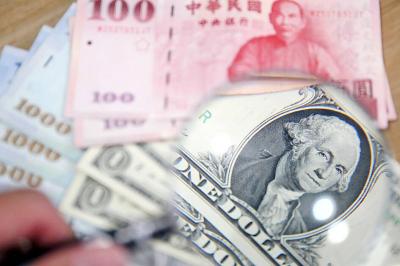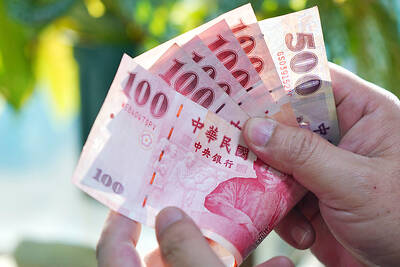The government will consider reinstating an export incentive that compensates manufacturers for the duties they pay on imported raw materials after the nation’s exports fell by a four-decade high last month, Minister of Finance Lee Sush-der (李述德) said yesterday.
Lee did not elaborate on which materials would be included in the incentive.
The nation’s exports dropped by 44.1 percent last month amid the global economic slowdown, marking a sixth straight monthly decline.
The duty drawback system, which has largely been phased out, was introduced in 1955, the ministry said, and allows exporters to apply for refunds of the duties paid on imported raw materials once merchandise has been manufactured from the materials and exported.
Because of incremental declines in tariffs, the government began eliminating the system in 1984.
From that year, a refund claim was denied if the tax rate was lower than 5 percent or if the refundable tax to be offset accounts for less than 1 percent of the merchandise’s free-on-board export value.
In total, exporters received NT$400 billion (US$11.764 billion) in refunds between 1955 and 2007, the ministry said.
A total of 5,721 out of 8,729 imported raw materials had been removed from the duty drawback list as of last March.
“Citizens are obliged to pay taxes, while it is the government’s responsibility to return tax that is not supposed to be levied, even if it is only 1 dollar,” Lee said.

The US dollar was trading at NT$29.7 at 10am today on the Taipei Foreign Exchange, as the New Taiwan dollar gained NT$1.364 from the previous close last week. The NT dollar continued to rise today, after surging 3.07 percent on Friday. After opening at NT$30.91, the NT dollar gained more than NT$1 in just 15 minutes, briefly passing the NT$30 mark. Before the US Department of the Treasury's semi-annual currency report came out, expectations that the NT dollar would keep rising were already building. The NT dollar on Friday closed at NT$31.064, up by NT$0.953 — a 3.07 percent single-day gain. Today,

‘SHORT TERM’: The local currency would likely remain strong in the near term, driven by anticipated US trade pressure, capital inflows and expectations of a US Fed rate cut The US dollar is expected to fall below NT$30 in the near term, as traders anticipate increased pressure from Washington for Taiwan to allow the New Taiwan dollar to appreciate, Cathay United Bank (國泰世華銀行) chief economist Lin Chi-chao (林啟超) said. Following a sharp drop in the greenback against the NT dollar on Friday, Lin told the Central News Agency that the local currency is likely to remain strong in the short term, driven in part by market psychology surrounding anticipated US policy pressure. On Friday, the US dollar fell NT$0.953, or 3.07 percent, closing at NT$31.064 — its lowest level since Jan.

The New Taiwan dollar and Taiwanese stocks surged on signs that trade tensions between the world’s top two economies might start easing and as US tech earnings boosted the outlook of the nation’s semiconductor exports. The NT dollar strengthened as much as 3.8 percent versus the US dollar to 30.815, the biggest intraday gain since January 2011, closing at NT$31.064. The benchmark TAIEX jumped 2.73 percent to outperform the region’s equity gauges. Outlook for global trade improved after China said it is assessing possible trade talks with the US, providing a boost for the nation’s currency and shares. As the NT dollar

The Financial Supervisory Commission (FSC) yesterday met with some of the nation’s largest insurance companies as a skyrocketing New Taiwan dollar piles pressure on their hundreds of billions of dollars in US bond investments. The commission has asked some life insurance firms, among the biggest Asian holders of US debt, to discuss how the rapidly strengthening NT dollar has impacted their operations, people familiar with the matter said. The meeting took place as the NT dollar jumped as much as 5 percent yesterday, its biggest intraday gain in more than three decades. The local currency surged as exporters rushed to